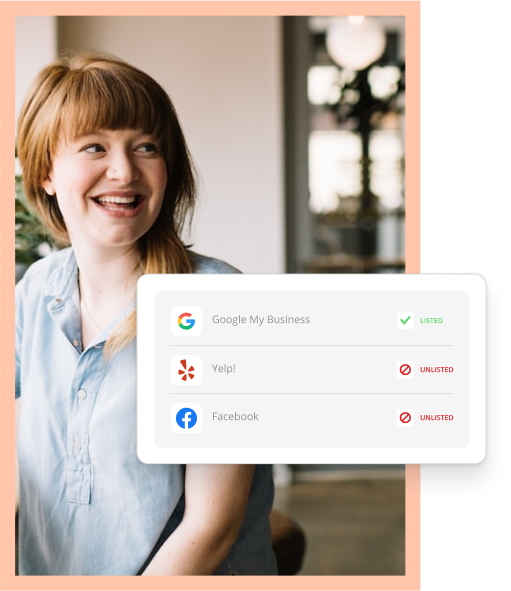What would you say defines your brand? From our perspective, it’s the way you look, how you sound, and everything you do to represent your business in your local community. Your brand is expressed in your marketing materials, your digital presence, and how you interact with each and every prospect and customer.
For the biggest, most recognizable brands, it’s taken time to build brand recognition and resonance. So local business owners shouldn’t be surprised if your brand vision doesn’t necessarily come to life overnight.

Modern Small
Business Playbook
Find expert tips and tools to help you streamline communications, automate your marketing efforts, improve your business operations, and more in this free guide.
Here are a few tips for branding your business like the big guys do.
Research what works in your industry.
Before you decide on everything from colors, to voice, to logos and even your business’s name (called brand elements), it’s time to deeply research what’s working for competitors in your field. You should notice themes as well as points of difference among various businesses that do what you do or something similar.
Now, think about what you want to accomplish. Where you’re similar to the competition, try to emulate (without copying) their successes. Where you’re different, you’ll want to figure out how to tweak your specific brand elements to stand out from the crowd.
Let’s take a look at fast food. If you’re familiar with any of the popular quick-service restaurants in the U.S., you’ve likely noticed some common themes among their brand attributes, particularly among their logos.

The first thing we notice is predominant colors like red, orange and yellow. Most of these big brand names use one or more of these warmer colors, and with good reason. According to a study conducted by the University of Toronto, the colors and shapes of these logos actually make consumers more impatient and more likely to spend money on-the-spot.
Then, just as we mentioned earlier, look at what’s different for some of the companies’ logos above. Subway, for example, brought green into their color scheme, no doubt an attempt to call attention to their biggest differentiator – adding garden-fresh ingredients to their menu.
Get to know your prospects and customers.
Once you decide how to position your brand in the same landscape as your competitors, while still calling out what makes you different, it’s time to see how the market will react.
Identify your ideal customers, and learn what’s relevant and meaningful to them. How? Start with a Google search, then take it a step further. Talk with current customers or even prospects, and conduct market surveys using your entire contact list. This research will prove or disprove your findings, so you can adjust your initial strategy as needed.
Ditch industry jargon.
Many of our clients offer very technical services. We work with lawyers, general contractors, healthcare providers and more. If you’re like these business owners, you know what you do better than most. When you’re that embedded in your business, it’s easy to get bogged down with complex industry terminology and jargon.
Here’s where that’s a problem. Your prospects and customers aren’t as familiar with what you do or how you do it. All they know is that you can hopefully solve a problem for them. To clarify your brand messaging, ditch the complex industry terminology, and simplify the value you bring as much as possible.
Talk benefits, not features.
Let’s say you own a plumbing business. Which value statement do you think will resonate better with customers:
- “We’re here to unclog your life. Any pipe in your house. Any time, day or night.”
- “We provide tailored plumbing solutions, including pipe snaking and repairs.”
Hopefully the first option above strikes you as the clear winner here. Though admittedly a little corny, it speaks much more to consumers’ most common pain point and immediate need when it comes to plumbing (24/7 service, right away). If you were to go with the second option, consumers are likely to be left with questions like, “Do you serve residential customers?” or “Are you available for urgent house calls?”
Still not sure if you’re on the right track? Try restating your messaging in terms of consumer pain points, rather than your business’s product offerings.
Focus on clarity and consistency.
Once you have the specific elements and essence of your brand solidified, growing brand recognition is all about clarity and consistency moving forward. Avoid changing your logo or business name around (you’d be surprised how often this happens), and stick to the colors, typefaces and core messages you chose after conducting your research and identifying your differentiator(s).
Every consumer touchpoint with your brand should feel like one, consistent experience with your business. So train your staff well and often, and continually monitor your marketing for consistency.

Modern Small
Business Playbook
Find expert tips and tools to help you streamline communications, automate your marketing efforts, improve your business operations, and more in this free guide.





